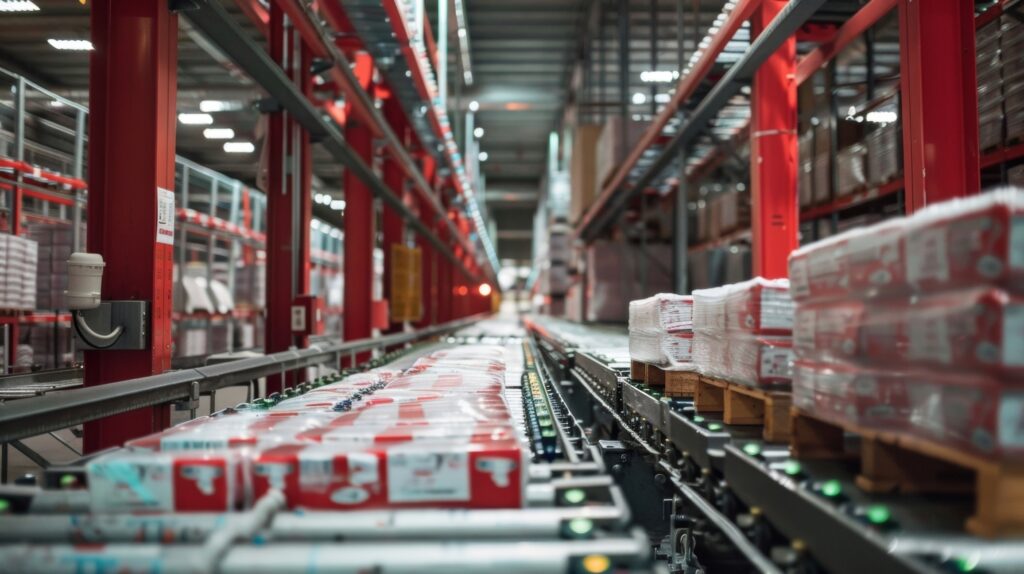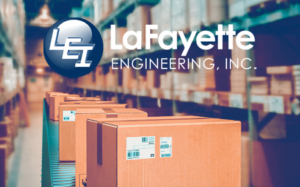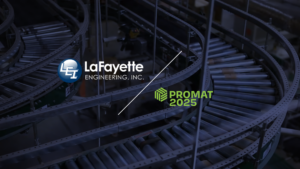Table of Contents
Conveyor installation is a critical process for many industries, ensuring efficient material handling and streamlined operations. In this comprehensive guide, we will walk you through the seven key steps involved in a successful conveyor installation, highlighting best practices and common challenges. With over 20 years of experience, we at Lafayette Engineering are experts in providing top-notch conveyor installation services.
What is Conveyor Installation?
Conveyor installation refers to the process of setting up conveyor systems, which are used to transport materials within a facility. This involves planning, designing, assembling, and testing the conveyor system to ensure it meets the operational requirements of the business. A successful conveyor installation ensures that the system operates efficiently, safely, and reliably, supporting the overall productivity of the facility.
The 7 Key Steps in Conveyor Installation
- Planning and Design
- Assessment: Evaluate the facility layout and material flow requirements. This step involves understanding the specific needs of the business, the types of materials to be transported, and the desired throughput. A thorough assessment helps in creating a tailored design that maximizes efficiency and minimizes operational disruptions.
- Design: Create detailed engineering drawings and specifications. The design phase is critical as it lays the foundation for the entire project. It includes selecting the right type of conveyor system, determining the optimal path, and specifying all necessary components.
- Approval: Obtain necessary approvals from stakeholders and regulatory bodies. This ensures that the design complies with all relevant standards and regulations, and addresses any concerns or requirements from stakeholders.
- Preparation
- Site Preparation: Clear the installation area and ensure it is ready for equipment setup. This involves removing any obstacles, preparing the floor, and ensuring that the site meets all safety and operational standards.
- Permits: Secure all necessary permits and comply with safety regulations. This step is crucial to avoid any legal or regulatory issues that could delay the project.
- Installation
- Foundation: Lay the foundation and support structures for the conveyor system. A strong foundation is essential for the stability and longevity of the conveyor system. This step includes constructing the base and installing any required support structures.
- Assembly: Assemble the conveyor components according to the design specifications. This involves putting together the various parts of the conveyor system, such as belts, rollers, and motors, and ensuring they are correctly aligned and secured.
- Alignment: Ensure proper alignment of the conveyor to prevent operational issues. Misalignment can lead to increased wear and tear, operational inefficiencies, and potential safety hazards.
- Testing
- Initial Testing: Conduct initial tests to verify the basic functionality of the system. This involves running the conveyor system without a load to ensure that all components work correctly and that there are no immediate issues.
- Adjustments: Make any necessary adjustments to optimize performance. Based on the initial tests, fine-tuning the system may be required to ensure smooth operation and optimal performance.
- Commissioning
- Final Testing: Perform comprehensive testing to ensure the system operates smoothly under full load conditions. This step involves running the conveyor with the intended materials to verify that it can handle the load and operates as expected.
- Training: Train the staff on the operation and maintenance of the conveyor system. Proper training is essential to ensure that the system is used correctly and that staff can identify and address any issues that may arise.
- Maintenance
- Regular Inspections: Schedule regular inspections to identify and address potential issues. Regular inspections help in catching problems early before they lead to significant downtime or costly repairs.
- Preventive Maintenance: Implement preventive maintenance practices to extend the lifespan of the conveyor system. This includes regular cleaning, lubrication, and replacement of worn parts.
- Optimization
- Continuous Improvement: Regularly review and optimize the conveyor system to enhance efficiency and accommodate changes in production needs. This step ensures that the system remains efficient and adaptable to any changes in the business environment.
Benefits of Professional Conveyor Installation

Professional conveyor installation offers numerous benefits, including:
- Increased Efficiency: A well-installed conveyor system enhances productivity and reduces downtime. This leads to smoother operations and higher throughput, supporting the overall goals of the business.
- Safety: Proper installation minimizes the risk of accidents and injuries. Ensuring that the system is installed according to safety standards helps protect workers and reduces the risk of costly incidents.
- Cost Savings: Avoid costly repairs and replacements by ensuring the system is correctly installed from the start. Investing in professional installation helps prevent operational disruptions and extends the lifespan of the equipment.
Frequently Asked Questions
1. How long does a typical conveyor installation take?
- The duration of a conveyor installation project depends on the complexity and size of the system. On average, it can take several weeks to a few months. Factors such as site preparation, design approval, and the availability of components can influence the timeline.
2. What factors influence the cost of conveyor installation?
- The cost is influenced by factors such as the type of conveyor system, the length and complexity of the installation, and any additional customizations required. Other considerations include the cost of permits, site preparation, and any modifications needed for existing facilities.
3. Can conveyor installation be done in an existing facility?
- Yes, conveyor systems can be installed in existing facilities with proper planning and minimal disruption to ongoing operations. This often involves careful scheduling and coordination to ensure that the installation process does not interfere with daily activities.
4. What are the common challenges in conveyor installation?
- Common challenges include site preparation, alignment issues, and ensuring compliance with safety regulations. Addressing these challenges requires careful planning, skilled installation, and ongoing communication with all stakeholders.
5. How often should conveyor systems be maintained?
- Regular maintenance should be performed based on the manufacturer’s recommendations, typically involving monthly inspections and annual comprehensive checks. Preventive maintenance helps in identifying potential issues early and ensures the system operates efficiently.
6. What types of conveyors can Lafayette Engineering install?
- We at Lafayette Engineering can install a wide range of conveyor systems, including belt conveyors, roller conveyors, and custom-designed solutions tailored to specific needs. Our expertise ensures that each system is optimized for the specific requirements of the business.
7. How can I ensure a successful conveyor installation?
- Partnering with experienced professionals like us at Lafayette Engineering is key to a successful conveyor installation. Our comprehensive approach covers every aspect of the process, from planning and design to installation and maintenance.
For more information about our conveyor installation services, visit our website and connect with us on LinkedIn.
In conclusion, a successful conveyor installation is a meticulous process that requires careful planning, precise execution, and ongoing maintenance. By partnering with experienced professionals like us at Lafayette Engineering, businesses can ensure their conveyor systems are installed to the highest standards, delivering maximum efficiency and safety. Our expertise and commitment to quality make us the ideal choice for all your conveyor installation needs.



